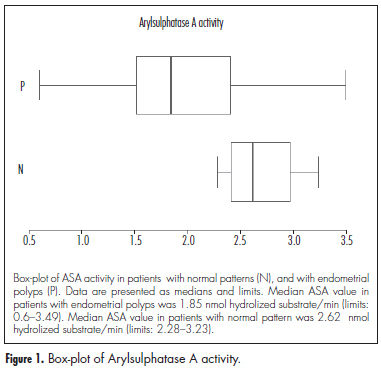Summary
Rev Bras Ginecol Obstet. 2024;46:e-rbgo33
Evaluate histological changes in testicular parameters after hormone treatment in transgender women.
Cross-section study with patients who underwent gonadectomy at Hospital de Clínicas de Porto Alegre from 2011 to 2019. Hormone treatment type, route of administration, age at initiation and duration were recorded. Atrophy parameters were observed: testicular volume, tubular diameter, basal membrane length, presence of spermatogonia and spermatids (diploid and haploid spermatozoid precursors).
Eighty-six patients were included. Duration of hormone treatment is associated with testicular atrophy and spermatogenesis arrest. Other characteristics of hormone treatment such as age of initiation, route of administration and type of treatment were not associated with testicular histological changes. Testicular volume may predict spermatogenesis arrest. Basal membrane length and tubular diameter ratio is an interesting predictor of germ cell presence.
Cross-sex hormone treatment affects testicular germ cell presence. Basal membrane length and tubular diameter ratio reduces inter variability of measurements and better exemplify how atrophic seminiferous tubules are. Fertility preservation should be addressed by healthcare providers in order to recognize gender affirming treatment impact on transgender health.
Summary
Rev Bras Ginecol Obstet. 2013;35(1):05-09
DOI 10.1590/S0100-72032013000100002
PURPOSE: To assess if arylsulfatase A activity (ASA) and sulfatide (SL) concentration in the human endometrium can be predictive of the development of endometrial polyps over the years, since ASA activity reflects the endometrial sensitivity to hormones. METHODS: ASA activity and SL concentration were determined by biochemical procedures on endometrial samples collected between 1990 and 1994 in non-menopausal women. These women underwent a new endometrial sampling following the clinical indication some years after the first endometrial sampling. The histological assessment of the second endometrial specimens found four patients with normal endometrial pattern and 10 patients with one or more endometrial polyps. ASA activity/years elapsed and SL concentration/years elapsed were compared using two tailed Mann-Whitney test for unpaired data between patients with normal pattern and patients with endometrial polyps. RESULTS: Median ASA activities were 2.62 (normal pattern) versus 1.85 (endometrial polyps) nmol hydrolized substrate/min. Median activity/years elapsed is higher in patients with second endometrial sample presenting normal pattern (p=0.006) and median SL concentration/years elapsed does not differ significantly among groups, even if median SL concentration seems to be higher in patients who subsequently developed polyps (1031 µg/g of fresh tissue versus 341,5 µg/g of fresh tissue). CONCLUSIONS: ASA activity can predict the onset of endometrial polyps over the years.
